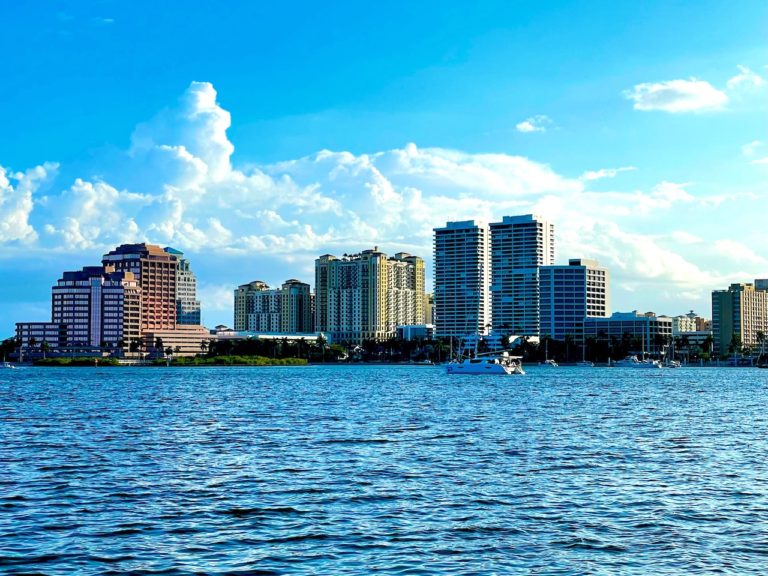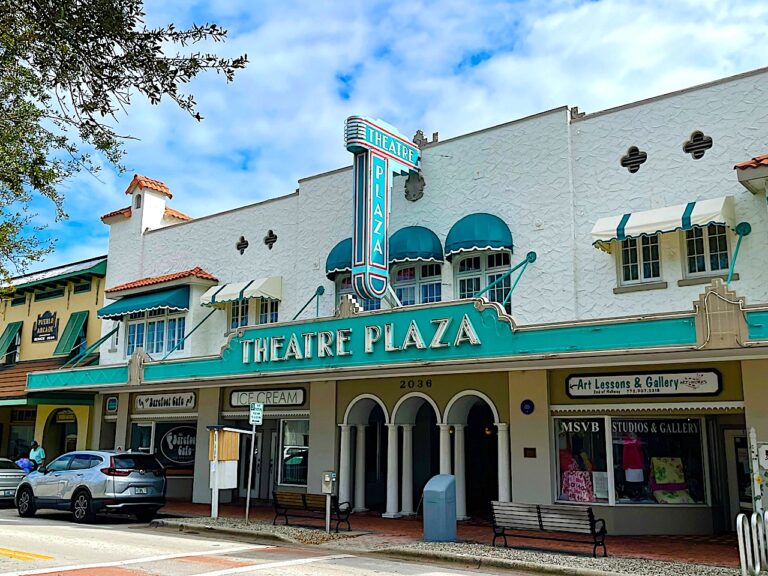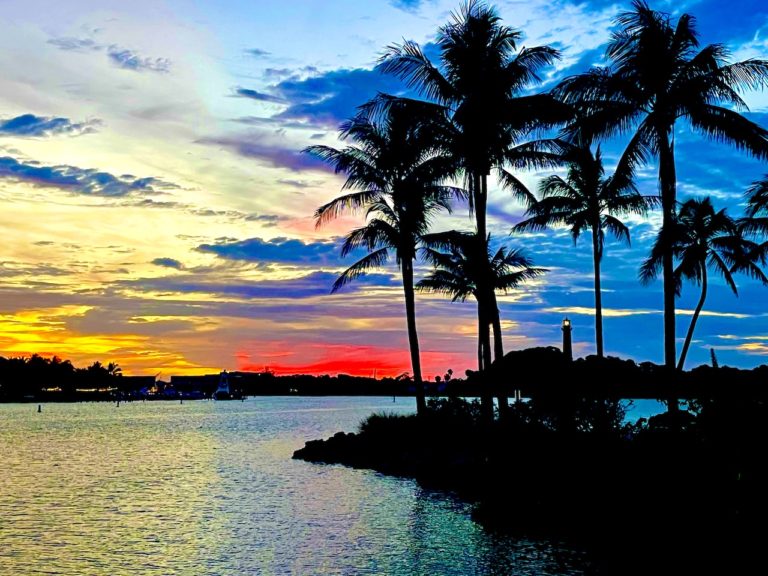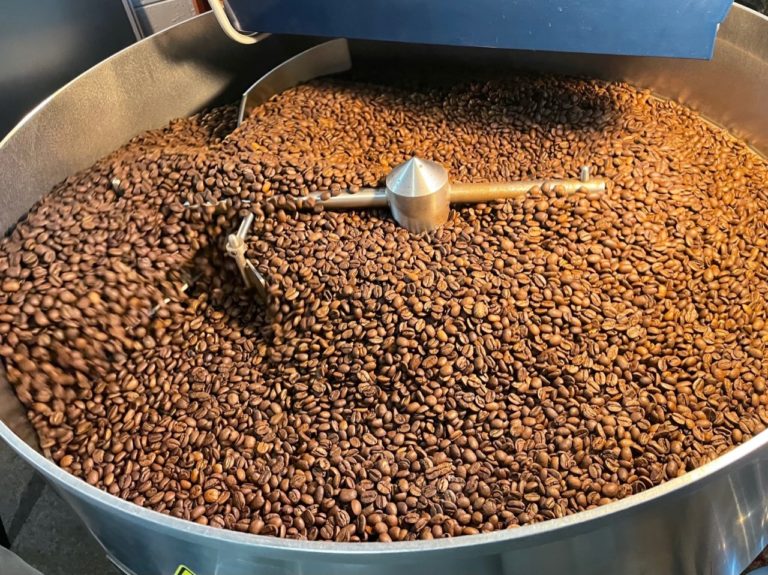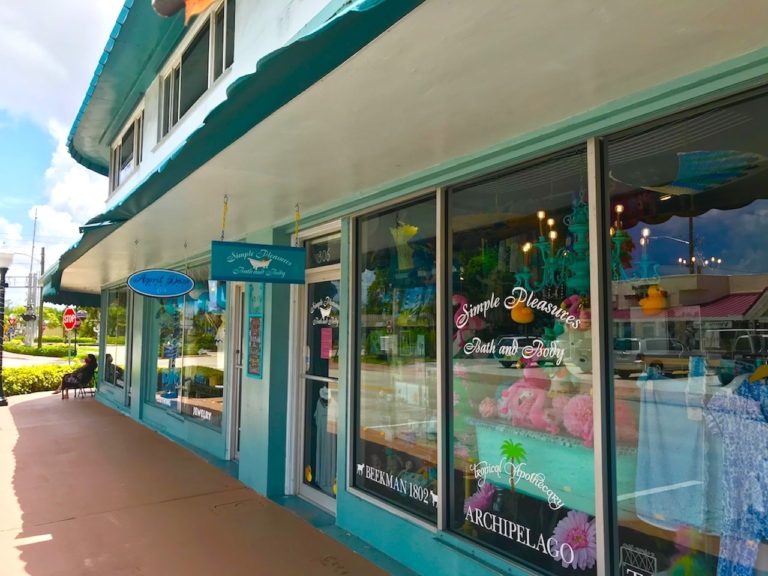This week All Around the Bend visits one of the most iconic landmarks in Palm Beach County, Florida. The Jupiter Inlet Lighthouse is located in Lighthouse Park along the Loxahatchee River. Your day at the lighthouse can include nature walks and special events such as lighthouse sunset and moonrise tours.
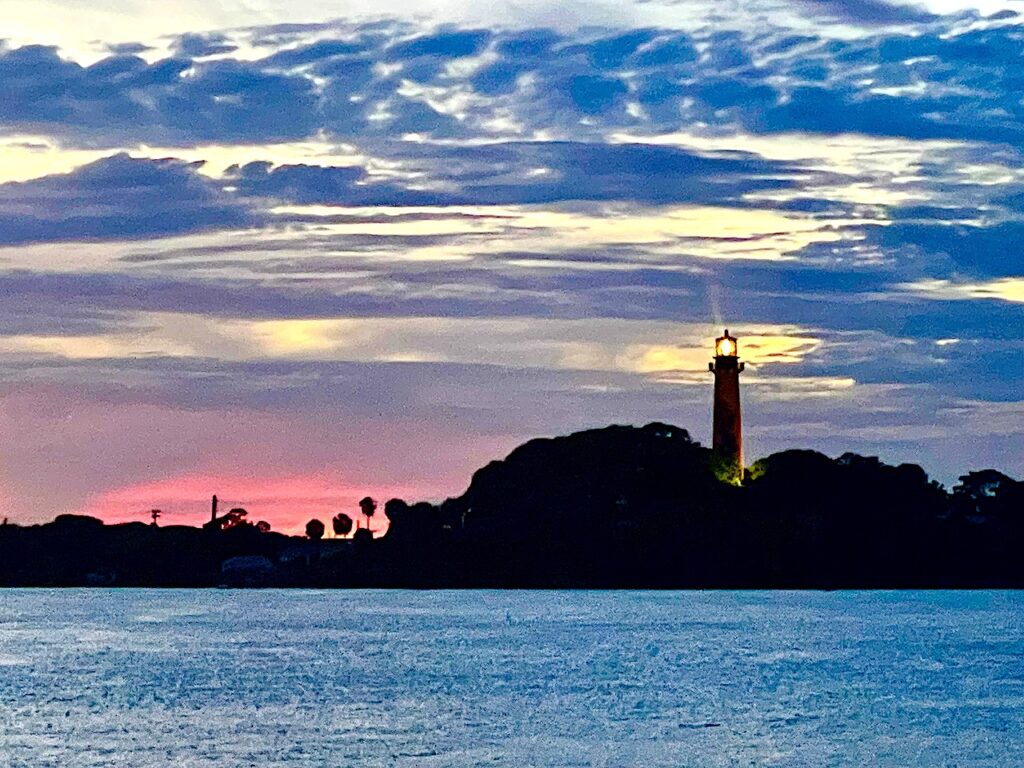
Completed in 1860, The Jupiter Inlet Lighthouse is the oldest surviving structure in the county. Built on a natural sandhill, the lighthouse stands 108 feet tall. The lighthouse’s beam first shined over the Atlantic Ocean a full year before the American Civil War began, and generations of heroic lighthouse keepers risked their lives to keep the light turning through ferocious hurricanes and storms. The First Order Fresnel lens light is visible 25 miles out to sea.
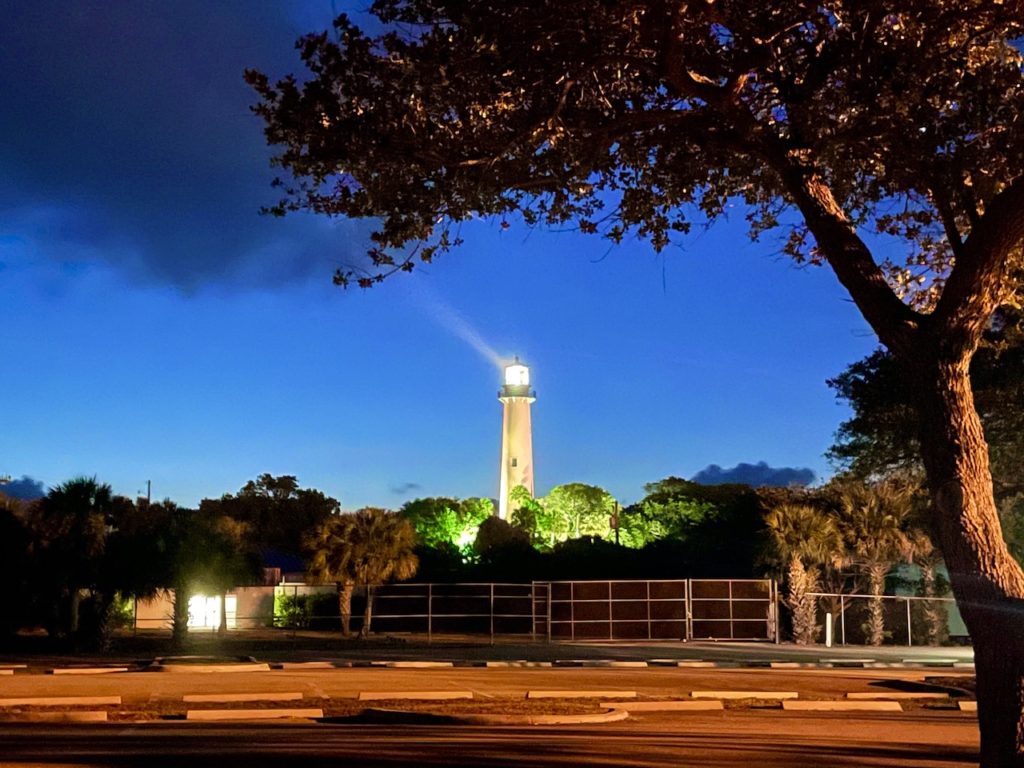
Sunrise
Dawn breaks over the Jupiter Inlet on Florida’s East Coast, and the Red Lady of Jupiter has just finished working the night shift. For now, it is lights out and time to take the day off from shining its beacon of light out to sea, lighting the way for sailors and ships as she has done proudly every night for over 150 years. Finally, it is time to rest.
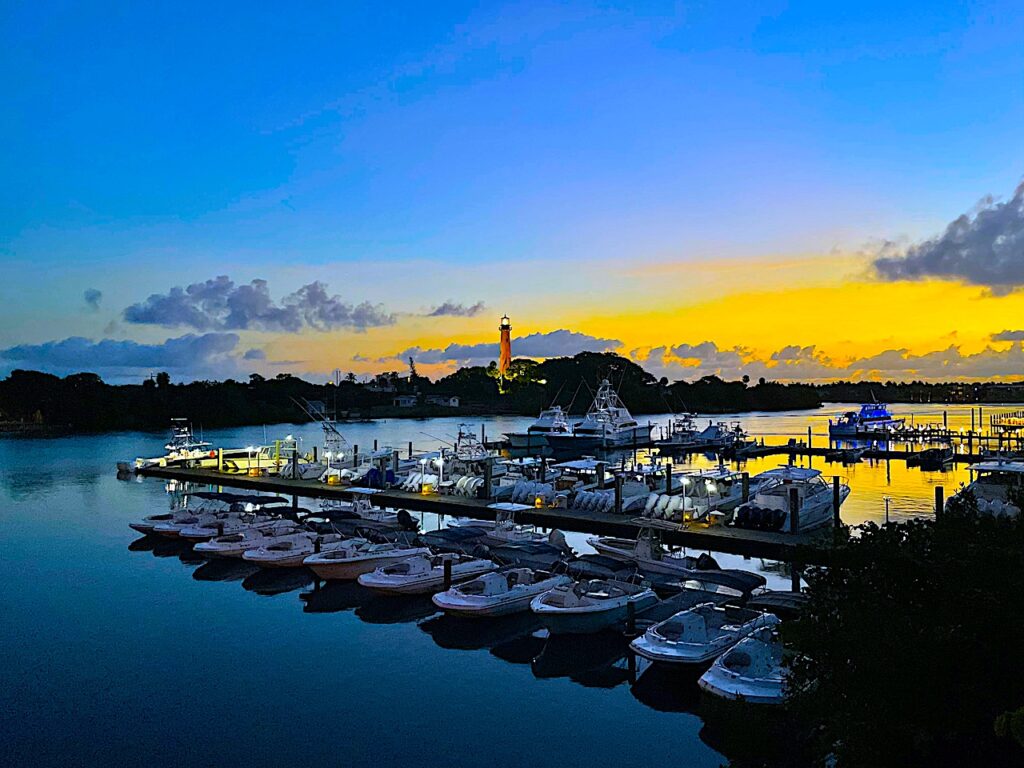
Climbing the Lighthouse
In 1973 the lighthouse was placed on the National Register of Historic Places, then in 1974, it was opened to public tours by the Loxahatchee River Historical Society. You can climb to the top of this landmark and see sweeping views.
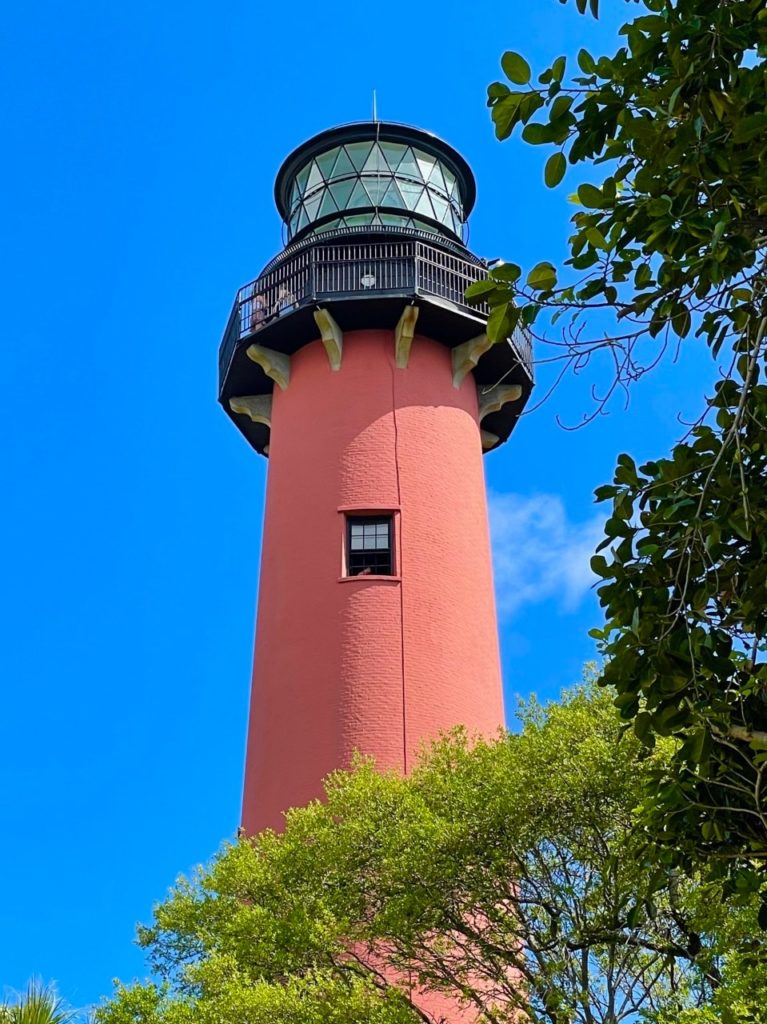
As you climb the 105 steps up the spiraling staircase to the top of the brick and iron structure, three landings allow you to catch your breath and view in different directions.

Those views themselves are amazing, but the views from the top are out of this world. Built on a natural sandhill, the lighthouse stands 108 feet tall, so when you get to the top you can see the Atlantic Ocean, the Indian River, Jupiter Island, the Jupiter Inlet, the Loxahatchee River, and the town of Jupiter.

It was windy at the top but on a clear day, you can see for miles.
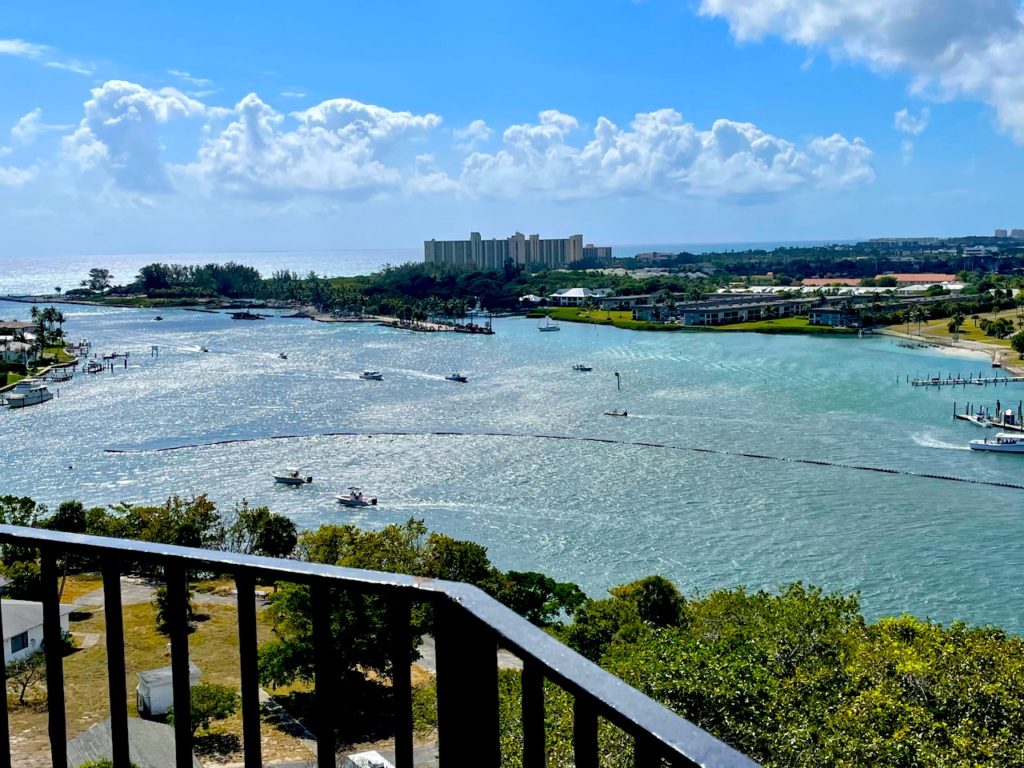
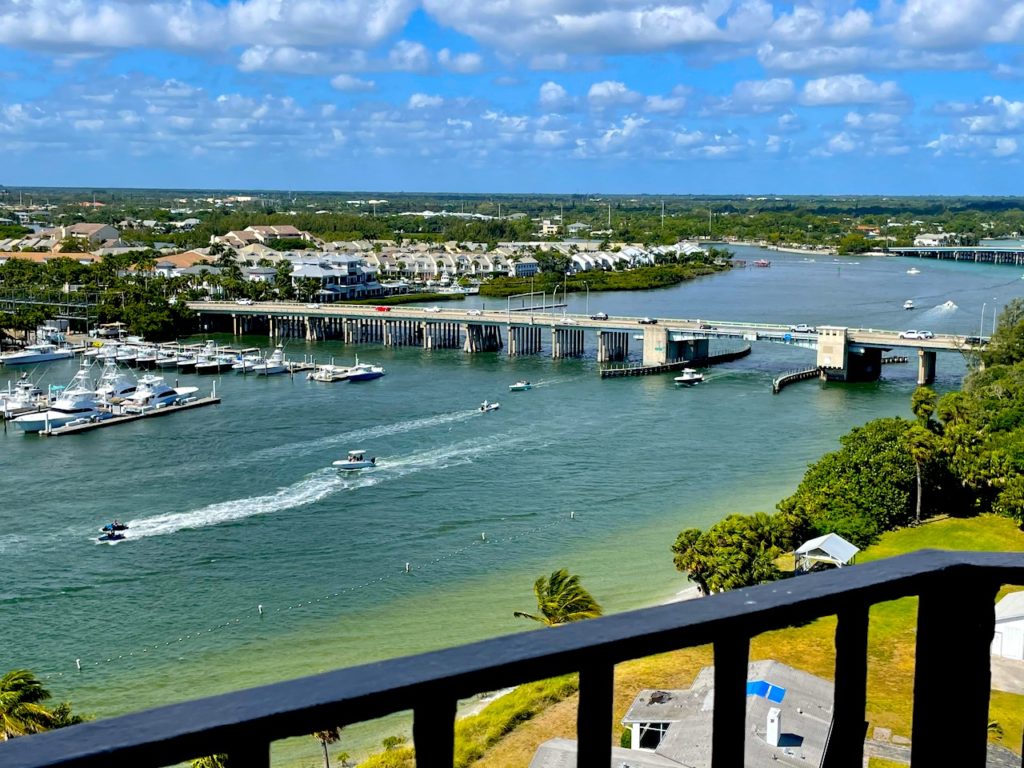
The Jupiter light differs from most lighthouses because of its thick, prismatic lens, called a First Order Fresnel lens. This specially designed glass is the biggest kind and could cast the light of an oil or kerosene lamp for miles into the foggy night. The lens is still active in the lighthouse but now runs on electricity. Although damaged during a 1920s hurricane, the lens was repaired and still broadcasts its beam. You can still see the cracks in the lens.
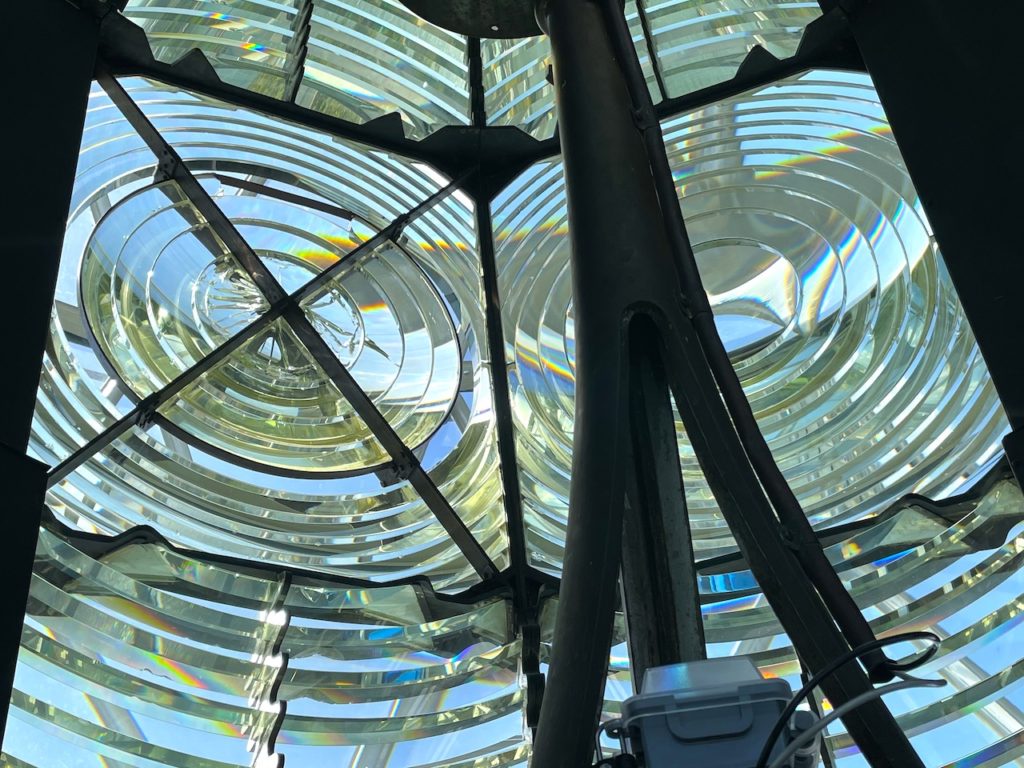
Keepers Workshop and Exhibit
When you get to the bottom of the lighthouse on the other side of the deck you will find the Keeper’s Workshop and Exhibit “Keeping the Light at Jupiter Inlet.” This exhibit will take you back in time for a look at the early years of the lighthouse. Eight stations provide information about the lighthouse. The museum is dedicated to preserving the lives of those who worked tirelessly to keep ships safe under challenging circumstances.
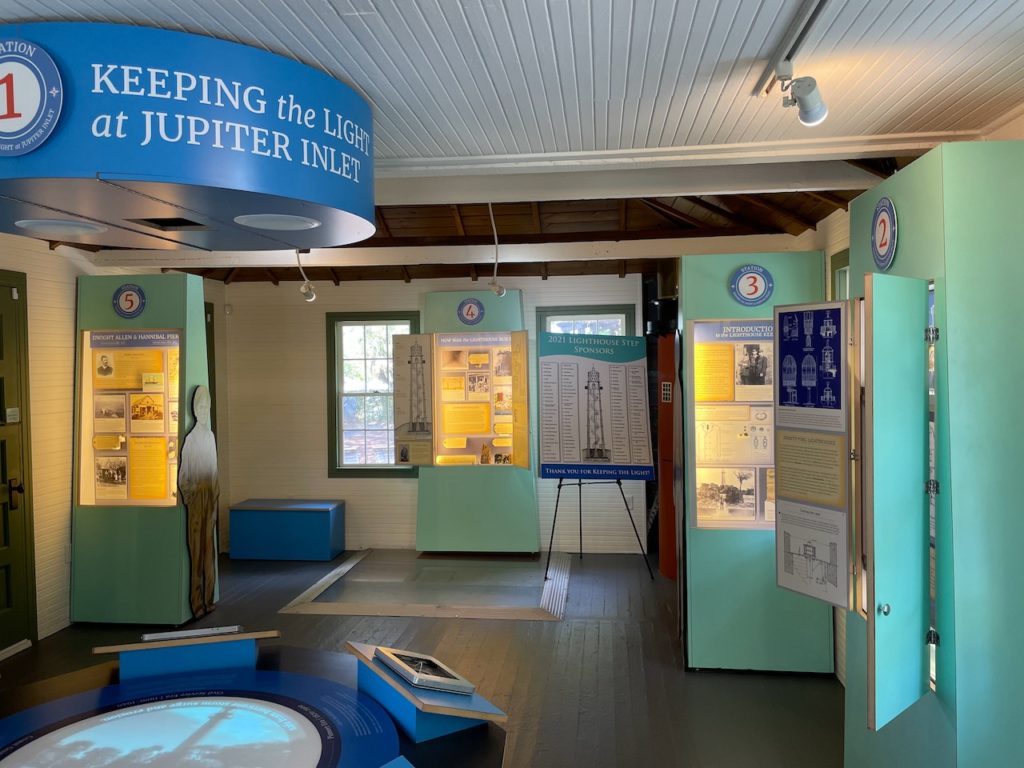
Ficus Tree and Lighthouse Deck
At the base of the lighthouse is a wooden planked deck built over the foundation where the Lighthouse keepers house once stood. The house was destroyed by a hurricane in the 1920s. On the deck, is a huge Ficus tree with limbs that reach out in every direction offering much welcomed shade. Banyan that looks like a whole forest but it actually one tree stretches across the expanse of the deck. Even though it may look like several trees, there is only one! We enjoyed the shade at its base after the climb. Brenda said her legs felt like jello.
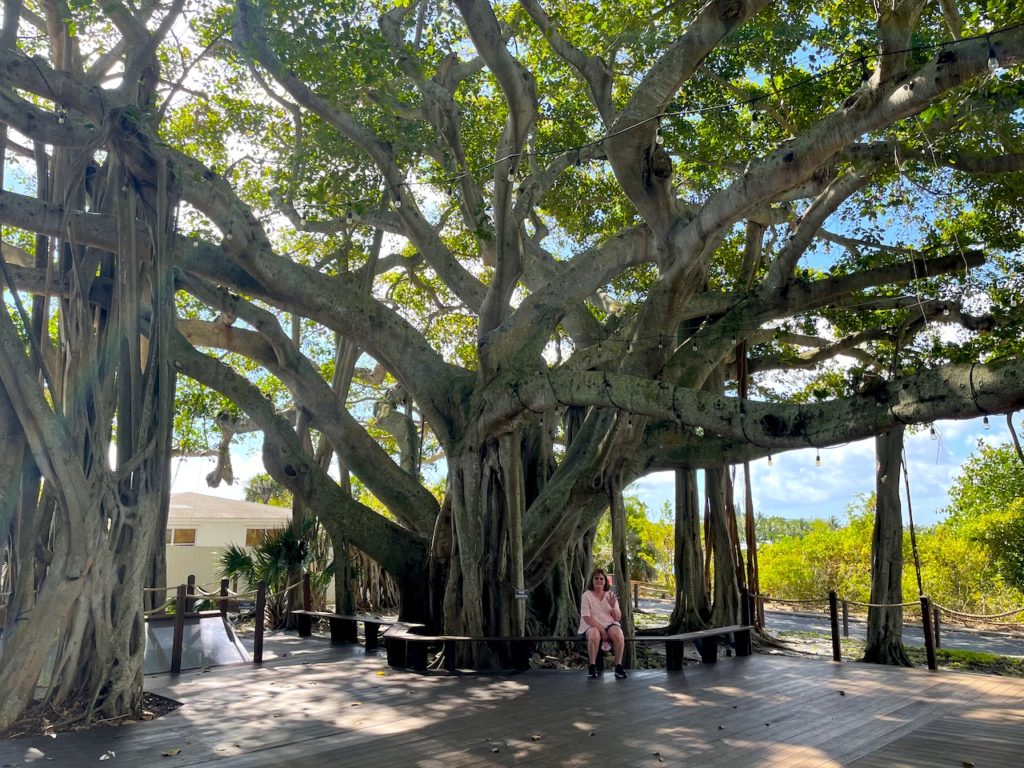
Lighthouse Legacy Pathway
The “Pathway to History” project offers visitors a unique opportunity to become a part of the “Lighthouse Legacy” by placing your family name, message, or remembrance on the well-traveled pathway. The pathway has over 2000 bricks dedicated to family, friends, marriages, veterans, and more. If your family roots date prior to 1945, you are eligible for the Pioneer section, which is at the beginning of the pathway. Look down as you walk, you might see some familiar names.
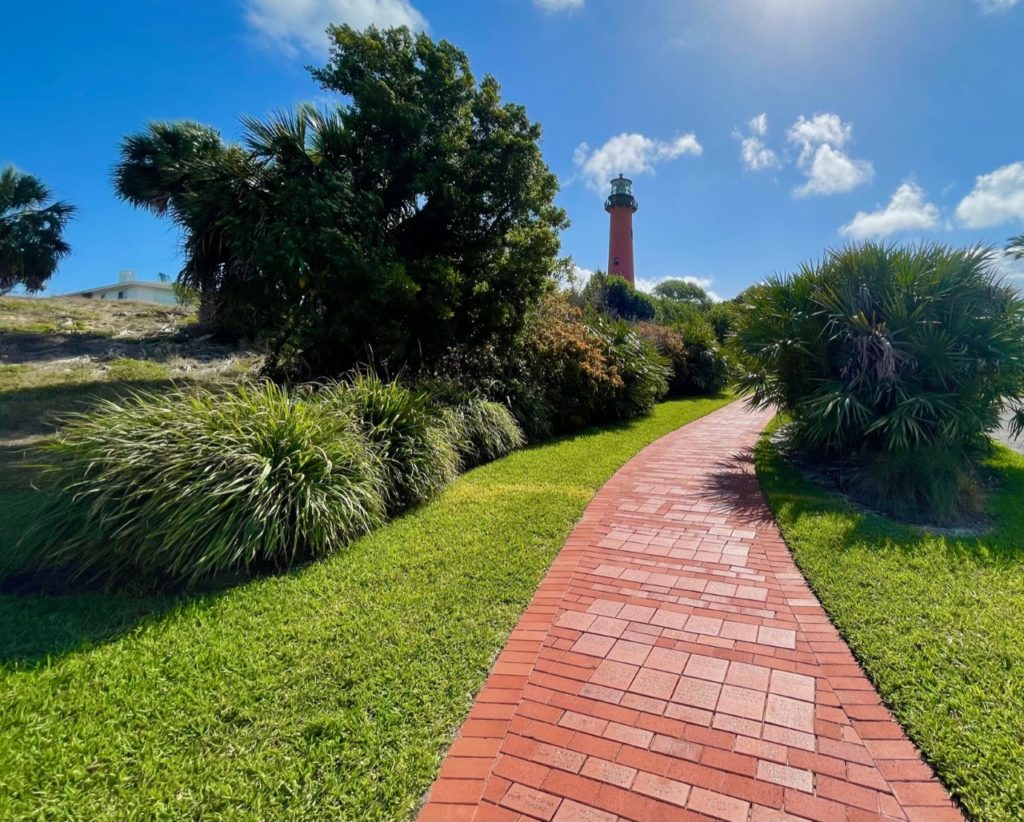
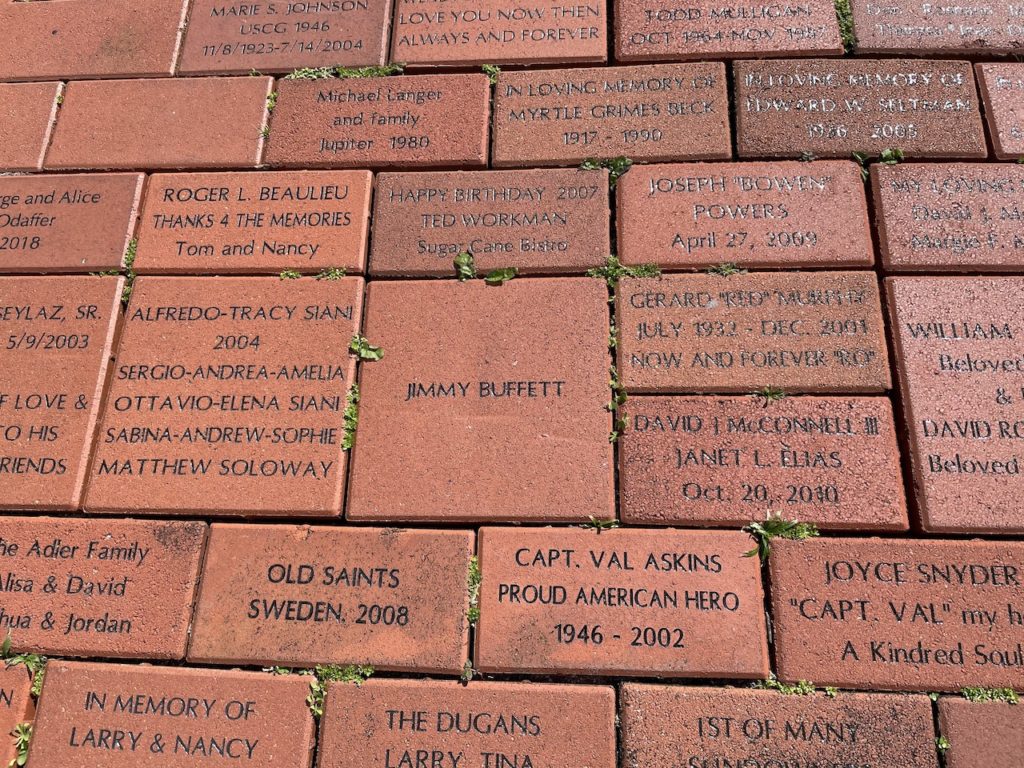
Tindell House
On your lighthouse visit, stop in at the Tindall Pioneer Homestead, the earliest house still existing in Jupiter. Visitors get a rare glimpse into the life of the early pioneers who settled along the Loxahatchee River. The house is a typical “cracker-style” house elevated off the ground. Planted around the house are pineapples, citrus trees, bananas, vegetables, and of course, sunflowers.
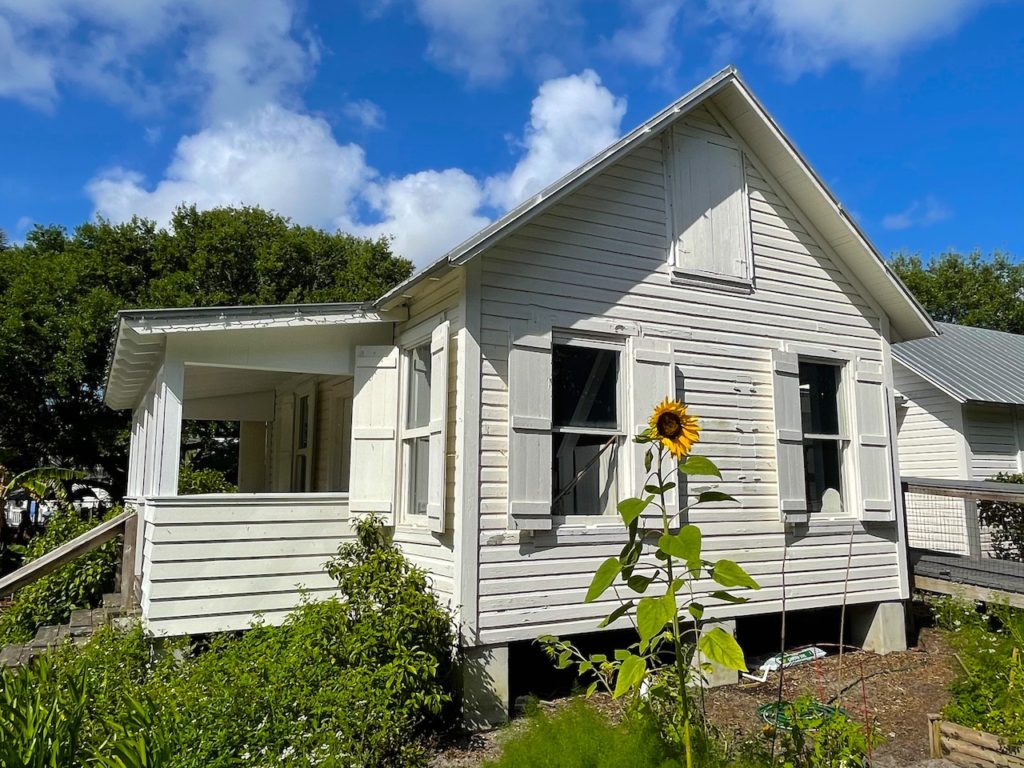
The house features four rooms: a living room, parlor, bedroom, and workroom. The roof was originally palmetto thatch, later replaced with tin due to risk of fire.
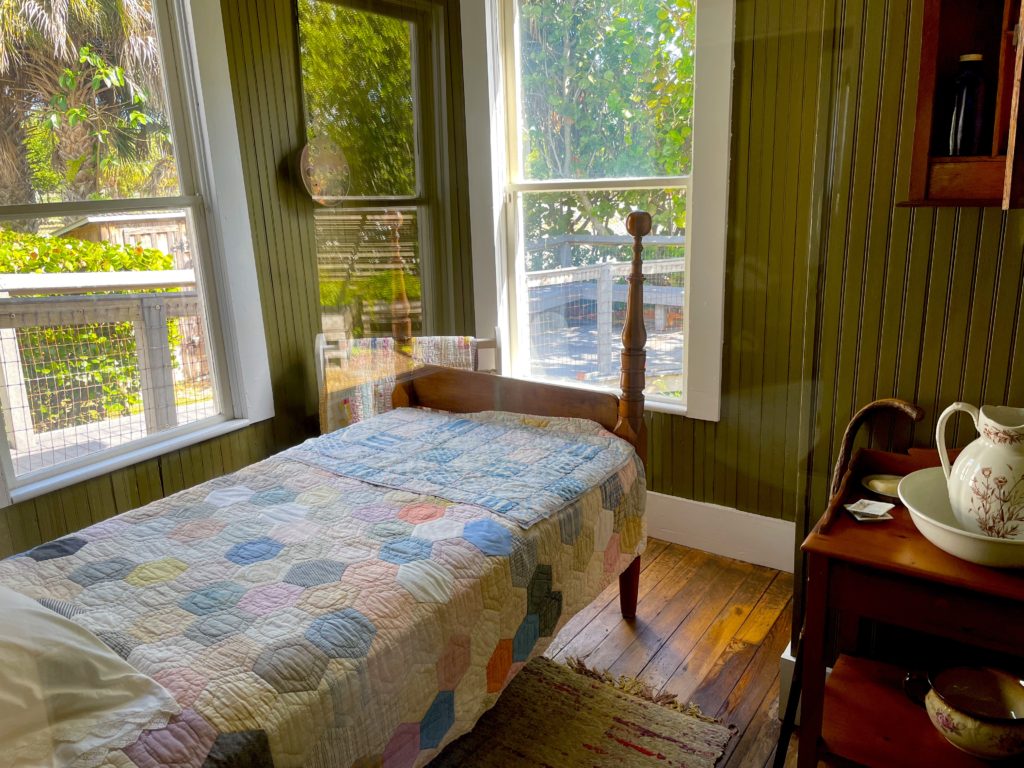
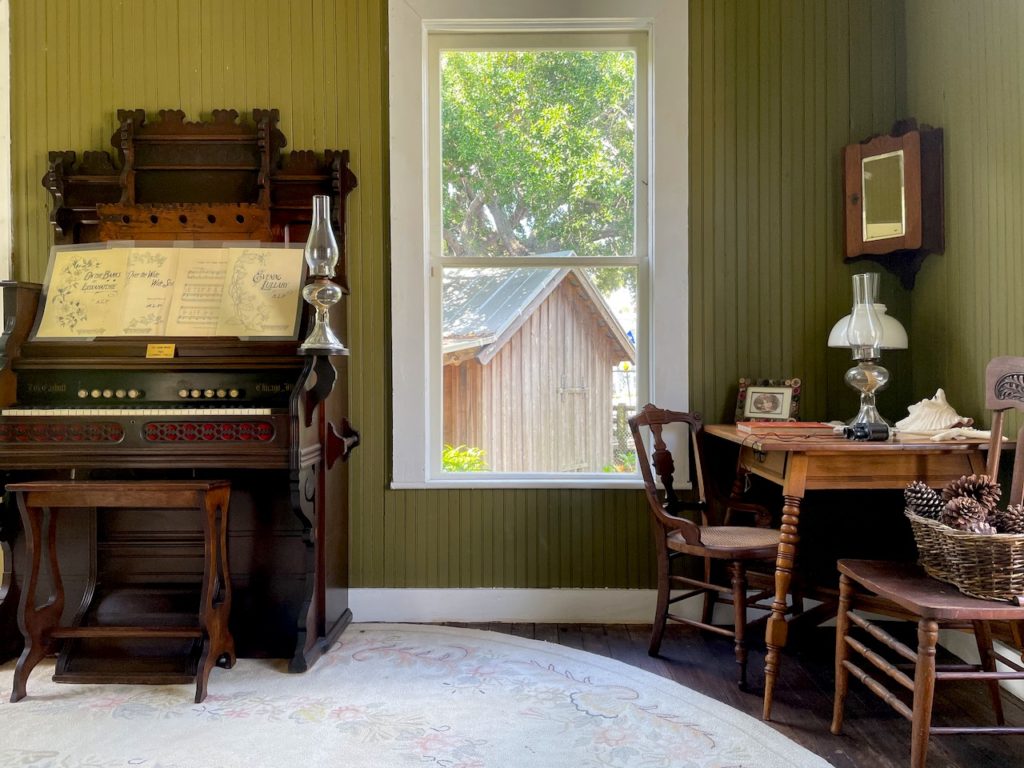
Pennock Plantation Bell
The Pennock Plantation was the first industry in Jupiter. They grew Asparagus Ferns used in floral arrangements. They also operated a Dairy Farm. At one time, the Pennock Plantation was the largest employer in Jupiter. The bell signaled lunchtime and the end of the workday.

Seminole Chickee Hut
The Seminole Chickee is a tribute to the history of the Seminole people in this area. The hut is an opportunity on lighthouse tours to stop and tell the story of Native American Indians and is also for monthly children’s stories and learning activities. It is one of the most fragrant and refreshing places on the property.
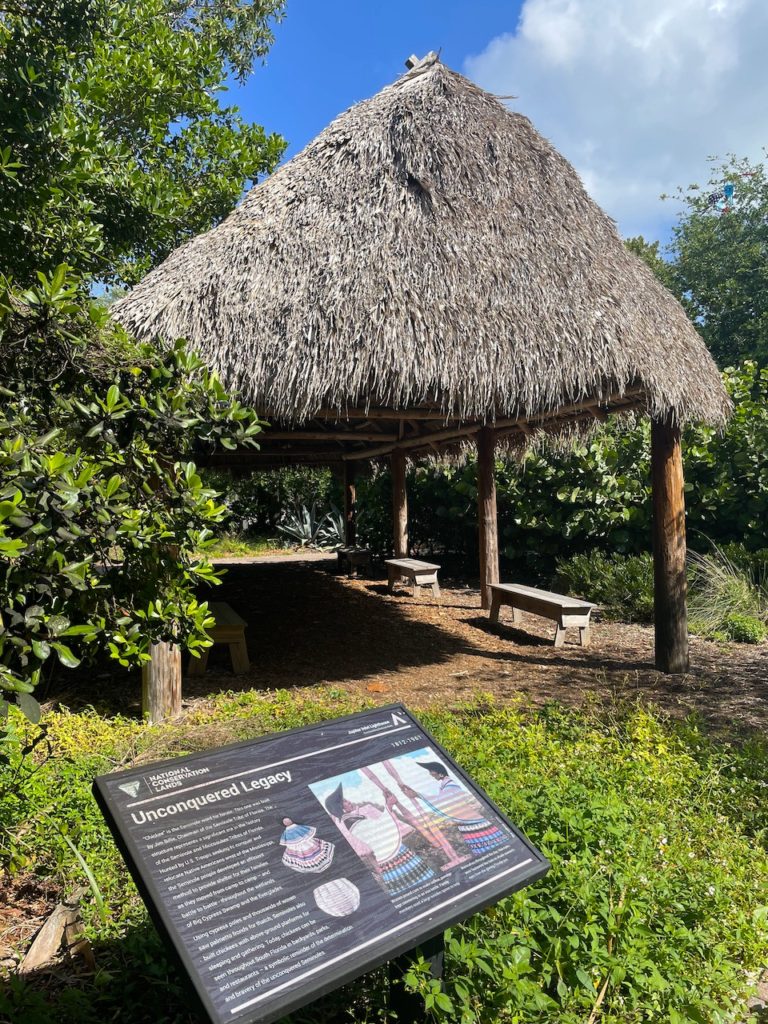
Museum and Gift Shop (Currently closed due to nearby bridge construction)
The Loxahatchee River Historical Society’s Jupiter Inlet Lighthouse & Museum occupies the last remaining building from an important World War II installation. The museum is in a building originally built to house US Navy personnel during World War II. This was the Married Men’s Quarters. Developed to locate the German submarines torpedoing ships off the Florida coast, Station J also served as a navigational beacon for military ships and aircraft and communications during the war.
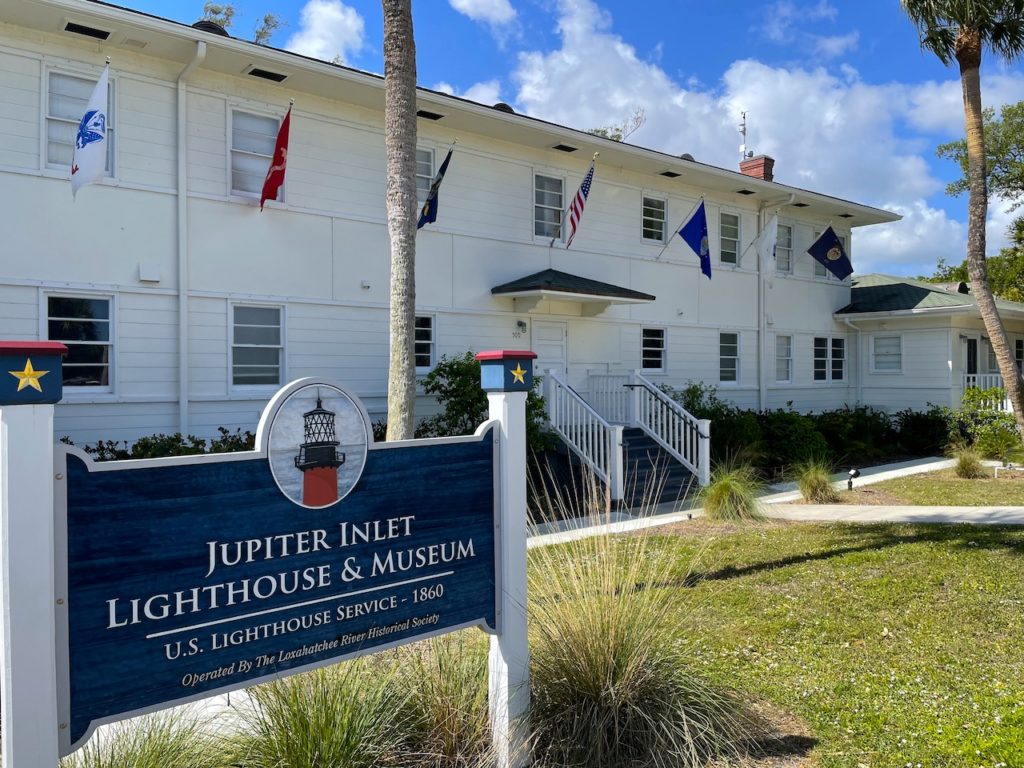
Sunset Tour
For a real treat, the museum offers a spectacular sunset tour. This is your opportunity to learn about the Jupiter Inlet Lighthouse and also experience a glorious South Florida sunset. Witness the Jupiter Light turning on to illuminate the night sky. You can get an inside look at the nuts and bolts of this working lighthouse during a tour. Space is limited and you have to make advanced reservations.

Lunch on the Water
After our Lighthouse tour, we headed to one of the Jupiter Inlet restaurants. U-Tiki Beach offers a great view of the Jupiter Lighthouse and surrounding turquoise waters. With a full bar and a decent wine list, the menu is heavy on seafood but offers salads, burgers, flatbreads, and steak for the landlubbers.
U-Tiki Beach: 1095 N Hwy A1A, Jupiter, FL

Tour Hours & Admission
The Jupiter Inlet Lighthouse and Museum is located on the north side of the Jupiter Inlet at 500 Captain Armour’s Way in Jupiter.
There is a $12 admission fee for adults, $6 for children 6 – 18, and no charge for children five and under. Special rates are available for U.S. Veterans and seniors 60 and over. Children must be 48” to climb.
Regular Days/Hours:
Tuesday – Sunday, 10:00 AM – 4:00 PM, Gift Shop open until 5 pm
The Museum building is temporarily closed due to Hwy. 1 bridge construction.


